How to Use Trap Crops as Decoys to Control Insect Pests
Have you ever noticed that you just can’t keep the bugs off certain types of plants in your garden?
In the same way that Goldfish crackers look more appealing than broccoli to most kids (and many adults!), some garden favorites are more attractive to insects than others.
If we know what crop a pest insect prefers over, say, your garden broccoli, we can exploit their preferences and use these alluring plants as traps.
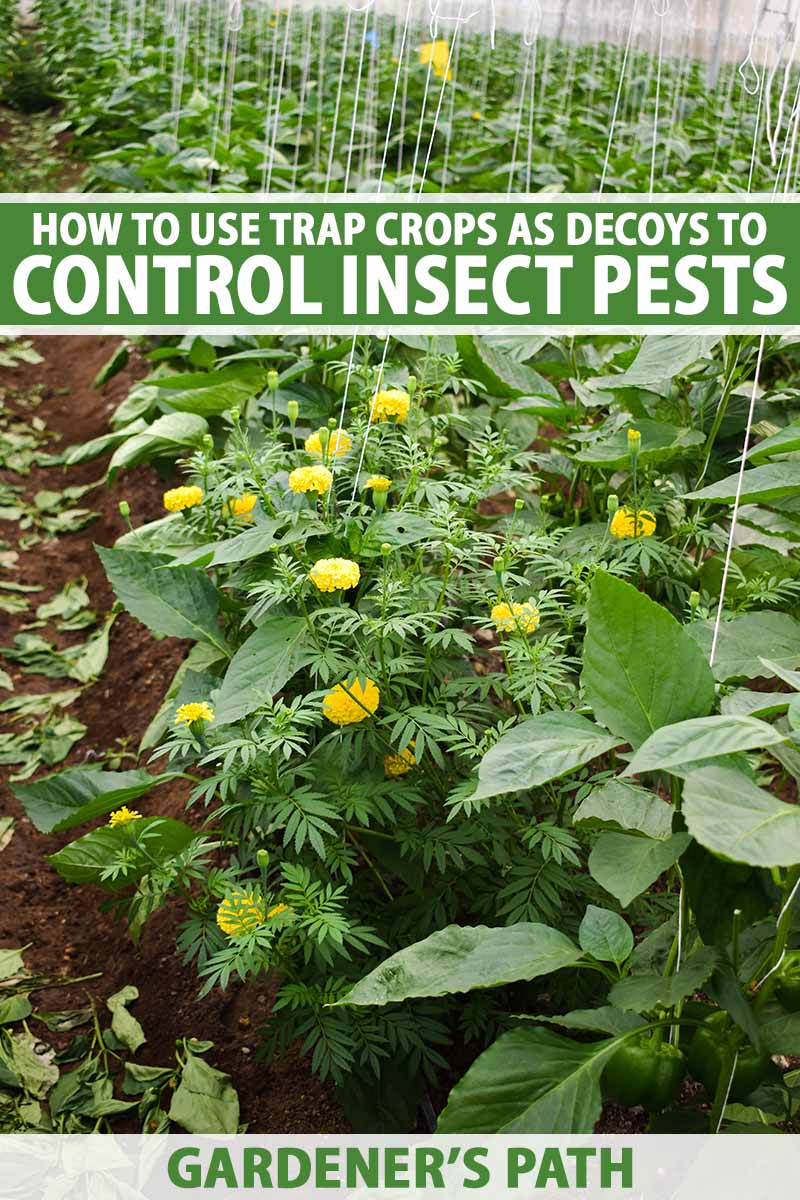

We link to vendors to help you find relevant products. If you buy from one of our links, we may earn a commission.
Trap cropping is an integrated pest management (IPM) strategy where gardeners or farmers use decoys to lure nuisance insects away from their crops. Once congregated in one spot, they’re more easily dealt with.
Everything you need to know about trap crops and how you can use them in your garden is laid out for you below!
Here’s what we’ll cover in this article:
What You’ll Learn
What Are Trap Crops?
Insects love plants. But plants of certain species and cultivars, and those in certain developmental stages, are often more attractive to garden pests than others.
Use this knowledge to your advantage and strategically place more attractive crops in or near the garden to lure damaging pests away from your vegetables, fruits, and flowers. While they’re busy feeding on the trap, your other plants are safe.
And it doesn’t stop there: once the bad bugs have congregated on the decoys, they can be killed with insecticides or by physically removing them.
Just like that, you are trap cropping!
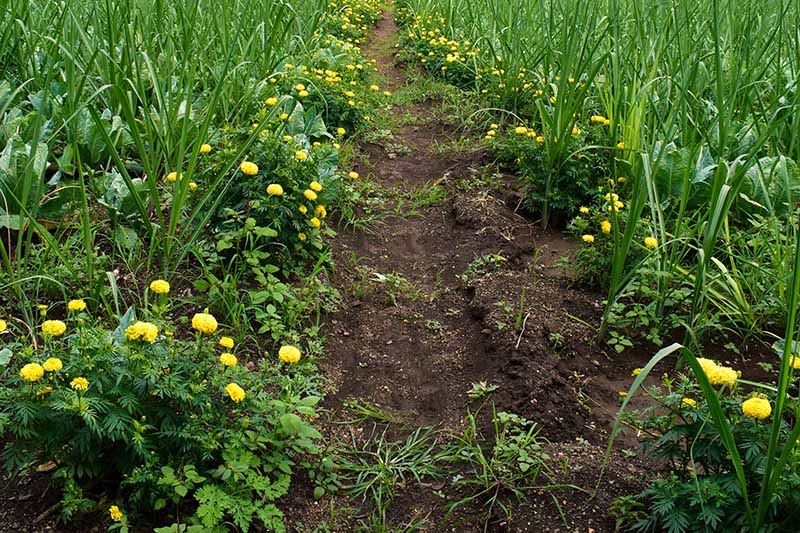

Also known as sacrificial plants or decoys, trap plants can be selected from a wide variety of options, as long as the pests like whatever you’ve chosen more than your precious crop.
This pest control method minimizes damage and protects your yield, among other things.
Sound good? Let’s get started! There are a few things you need to know before you start planting your decoys.
How to Use Trap Crops
There are several methods available to add these decoys to your growing space. You can put them on the garden perimeter, or in between the rows for a practice known as intercropping.
How do you know when to use which method? The decision depends on the type of pest you are dealing with.
Perimeter traps are perfect for large fields or crops planted in blocks, and for preventing insects from entering your garden from the fringes.
This method is most effective when you’re targeting insects that can’t fly or cover distance that well, such as thrips, which often affect the edges of the planting area and don’t penetrate the middle of large fields.
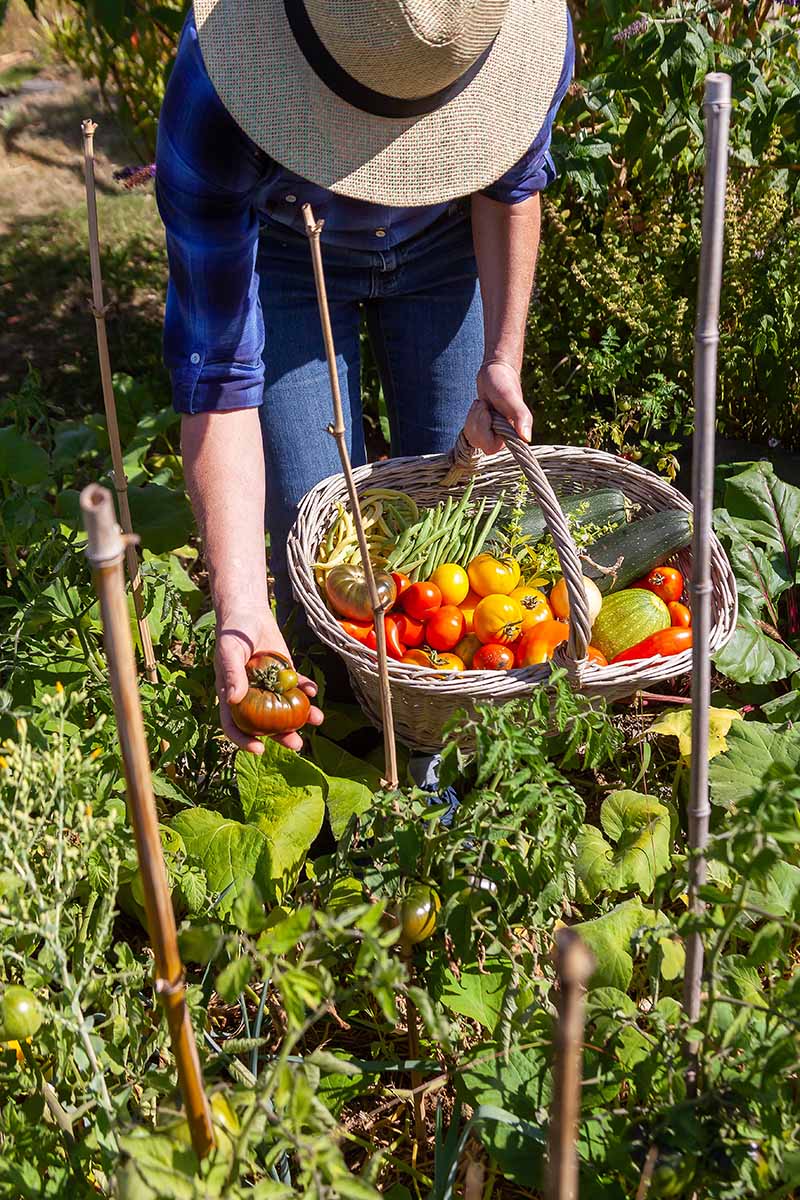

Intercropping is better for targeting stronger fliers and pests that dwell in the soil, such as plant parasitic nematodes.
In general, intercropping is the go-to option for those with smaller gardens since they don’t typically include large blocks of a single crop. Instead, you’re aiming to protect smaller rows, beds, and mixed plantings.
You can place your decoys in pots or in the ground, though planting in containers may not be feasible if you need a large number of trap plants.
Consider using pots if you are starting them so early in the season that they might need to be taken indoors for frost protection.
How do you know how many decoys to add to your garden?
It depends on how many pests you expect, and on how mobile the given species is. Normally, aiming for a total number of traps that’s 10 to 20 percent of the total number of main crop plants is sufficient.
There are a few other points to keep in mind for effective trap cropping:
1. Start Early or Provide Something More Attractive
The trap must be available to hungry insects earlier in the season, or be more attractive to them overall, than your crops that you aim to protect. In general, two weeks is a good lead time.
Starting the decoys earlier than your main crop is smart, as a large number of pests find plants that are producing flowers, fruits, and seeds to be the most attractive to feed and reproduce on.
But if you’re targeting grubs that are already in the soil and getting ready to emerge and feast, tender shoots and leaves might be more prone to attack.
2. Monitor and Identify Pests
You need to know which type of pest is likely to invade your crop.
And you can’t assume that one trap crop will be more attractive to all of the bad guy insects that might pay your produce patch a visit than your veggies or flowers are.
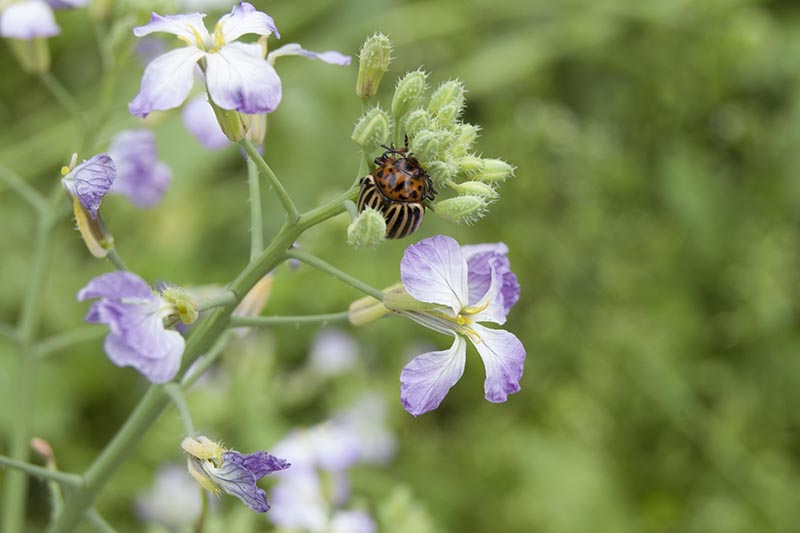



Consider each on a case-by-case basis. Are you worried those hornworms will be back to chew on your tomatoes again this year? Interplanting dill or lovage to entice the larvae away is the way to go.
But if you’re concerned Colorado potato beetles will be after your potatoes, try intercropping horseradish or tansy instead.
3. Keep Your Decoys Healthy
Even if they aren’t the main attraction in your garden, it’s important to keep these guys healthy too!
Water, fertilizer, and light considerations are important for maintaining their health, so the decoys will keep looking delicious to the pests.
4. Eradicate the Insects
Finally, and most importantly, be sure to kill the pests that have found the decoys.
Part of the beauty of trap cropping is that there are way fewer plants to scout than you would have if you were trying to monitor each individual crop plant for signs of infestation. But you still need to keep a bead on them.
Once the bad bugs begin to concentrate on your decoy, don’t let them feed, breed, and disperse from there.
Handpick and dispose of the pests, pull and destroy the entire decoy, or kill them with insecticides if you have to. Less area to spray means less pesticides are needed as well!
As far as pulling your decoys goes, sometimes you may need to remove the trap itself if the pest problem is severe, and populations have grown so large that they can’t be controlled with handpicking or insecticides.
Whatever method you use to destroy them, make sure the insects are not given time to flee, or otherwise able to escape and then re-invade your garden.
As this is an integrated pest management strategy, it works best when you combine it with other protection methods such as crop rotation.
Trap Plant Types
How do you decide which species or cultivar to use, knowing it needs to target a specific pest and serve to be more attractive to that insect than the crop you are trying to protect?




Thoughtful companion planting is key. You may have heard of using marigolds to protect solanaceous, cruciferous, leguminous, and cucurbitaceous crops from parasitic nematodes.
Chervil, planted in between vegetables or ornamentals, will take the brunt of any slug problems. But most varieties that you choose will work for targeting a specific pest on a specific crop.
Decoys may come from the same family, genus, or species as the ones you’re trying to protect, or they may be more distantly related.
For example, ‘Blue Hubbard’ squash are effective for luring squash bugs and squash vine borers away from your other cucurbits.
But basil or marigolds may prove effective if you’re trying to catch thrips before they get to your garlic – and none of these species are closely related.
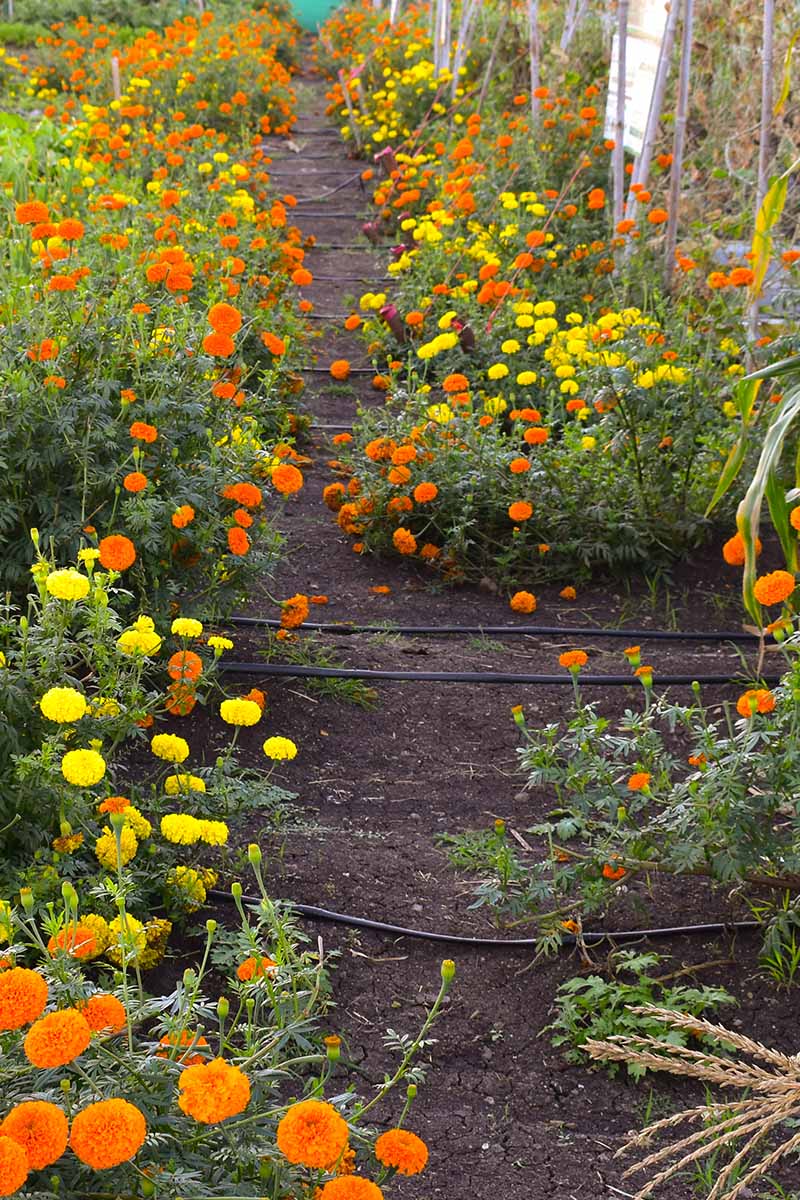



If you use the same species as a decoy, the usual recommendation is to sow or transplant it early and destroy it before the main crop reaches its vulnerable stage in the hope that the trap crop will harbor the biggest initial wave of nuisance insects.
Starting early also means your sacrificial plants may be at a more attractive developmental stage than the main crop when the pests arrive.
And you can keep it around if you choose rather than removing the trap from the garden, to continue attracting pests away while the main crop is growing, and killing the pests that gather on it throughout the season.
Keep in mind that decoys are not always undesirable as vegetable, fruit, or flower crops – they might be edible species that you love to grow in your veggie patch otherwise, or ornamentals that add attractive value to your outdoor spaces.
In addition to the aforementioned examples, onions or garlic can be used to protect carrots from carrot root flies, for example, and radishes are more appealing than cabbages to flea beetles and root maggots.






You can use Chinese cabbage, mustard, or radishes to protect cabbage from cabbage webworms, flea hoppers, and mustard aphids.
Legumes can be used to lure leafhoppers, leaf beetles, stalk borers, and fall armyworms away from corn. And hot cherry peppers can be used to attract pepper maggots away from your crop of bell peppers.
There are many resources available with specific recommendations for all kinds of edible and ornamental crops, and the list of possibilities is quite extensive. Do your research before you plan your plots and start to sow!
Just remember that you aren’t going to want to pick or eat the wormy or infested decoys – this is where garden planning is important. Decide in advance which ones are the traps, and be prepared to destroy them if necessary.
In other words, you can feel free to enjoy the sunflowers you used to attract leaf-footed bugs and stink bugs, but don’t get too attached.
They’re probably not going to wind up in a vase someday, since they were intended to serve a different purpose.
Benefits and Challenges
Adding decoy plants to your IPM strategy can result in more than relief from pest pressure, and undamaged cabbages and tomatoes.
With fewer plants and a smaller area to spray, you can decrease your pesticide use and stay within your budget.
Less pesticide use translates into other benefits as well, including preserved natural enemies (aka good bugs, the beneficial insects), increased biodiversity, and overall environmental conservation, with fewer potentially harmful inputs that may affect the water, soil, and air.
Plus, featuring a variety of plant species in your garden makes it a more attractive space for beneficial insects, which will flock there naturally as a result.
Concentrated numbers of pests in specific locations can be quite inviting to beneficials too!
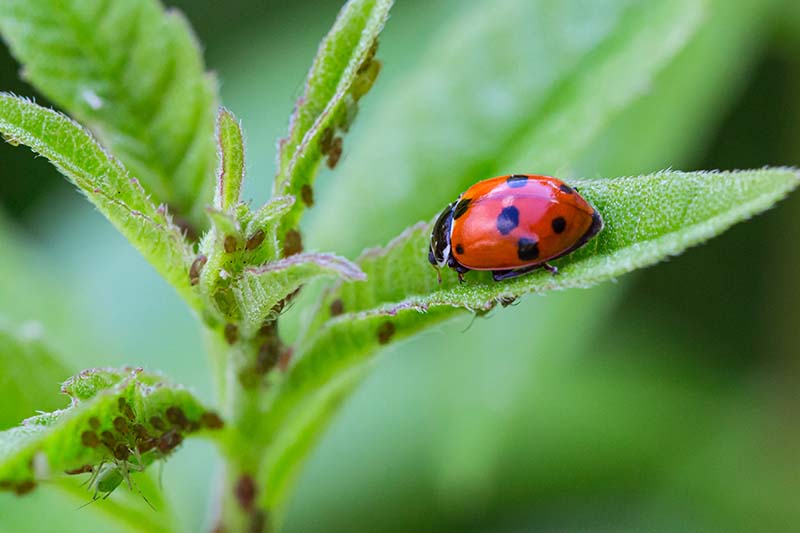



Using this pest management method is not without its challenges, and it’s important to keep these in mind.
If they are not properly dealt with, they can become nurseries, churning out large numbers of fresh monsters in future generations rather than helping to eliminate the ones that were already hanging around.
Things can also get complicated if you are trying to deal with multiple pests on multiple crops.
And it does take extra time to manage, since the decoys need to be started early, sown in high-quality soil, scouted, and maintained.
To successfully use trap crops in your garden, you need to have some idea of who the insects you are looking at are. This can be tricky, but we’ve got you!
Check out all of our pest-specific guides for in-depth information and identification tips.
Distract Pests from the Main Event
The way I like to think of it, your crops are like a ball you’re throwing for a dog, which in this example represents the pests.
The dog is running full-tilt towards the ball, but suddenly veers off after another target: a squirrel. That’s your decoy. It’s a lot more fun to chase, and a potentially tastier target.
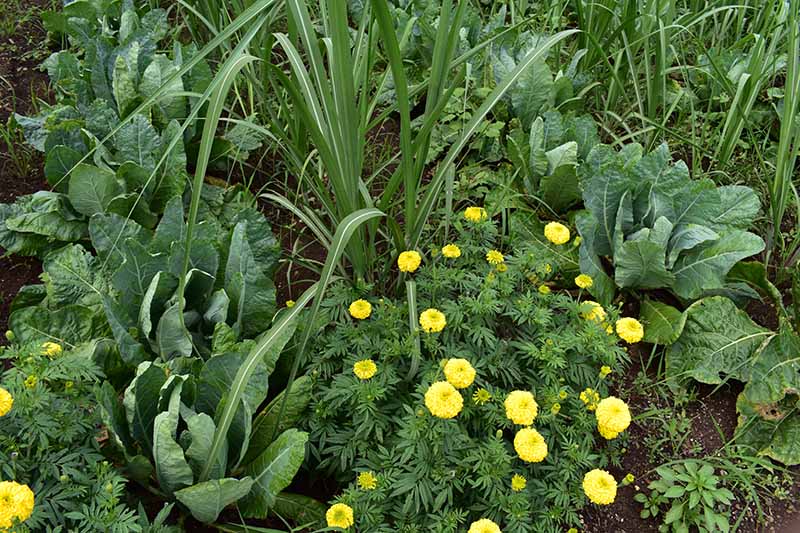



In the case of your garden, you actually don’t want the dog to catch the ball, so you plant the squirrel there on purpose.
Have you ever tried trap cropping? How did it work for you? Let us know in the comments below!
And while you’re here, read about other beneficial cropping methods next, starting with these articles:
